- Presentation of the exhibition
- The Jews in Ukraine
- The beginning of the genocidal policy
- The radicalization of genocide
- Father Patrick Desbois and Yahad-In Unum
- The stages of execution
- Panoramic views of the exhibition
The stages of execution
The hundreds of testimonies collected by
The exhibition of the Shoah Memorial meticulously describes the 8 steps highlighted by the researchers of Yahad-In Unum. The itinerary thus presents texts and archival documents as well as excerpts from testimonies, montages of excerpts from the stories of Ukrainian witnesses interviewed by the Yahad-In Unum team.
1 - The Germans organize the preparations for the killings:
Jews are summoned by means of display, radio or loudspeakers, Ukrainians are requisitioned.
The Germans order the Jews to gather at a specific place, equipped with warm clothes and food for several days. In small towns or villages, they contact the mayor of the village who provides them with a list of inhabitants and then only have to go to their victims' homes to arrest them.
The requisitioning of Ukrainian civilians by the Germans is a usual and frequent occurrence in the towns and villages of Ukraine. The peasants, men and women, often very young, are requisitioned to dig pits, transport Jews, fill the pits.
2 - The Jews are arrested, gathered or locked up, then transported to the place of execution.
Several methods are used to arrest the Jews: trickery by announcing their transfer to the East, in Kiev, or in Palestine; regrouping in ghettos; arrests at home.
For several days, the police crisscross the village, fields and forests to find the Jews who are hiding in their attempt to escape the arrests.
In any case, the arrests are accompanied by numerous assassinations.
The Jewish victims are first transported from the place of assembly to the place of the first undressing close to that of execution, either on foot, arranged in columns, or on horse carts accompanied by armed guards, either in trucks in which there is also an armed guard.
3- The Jews wait near the place of execution, then they are stripped and their last possessions are confiscated. A final selection takes place.
The waiting area is not located next to the pit so that the victims cannot see it. Sometimes the Jewish victims do not wait but are instead driven very quickly and under blows, to be shot as soon as they approach the pits.
In the majority of cases, Jews must undress completely, first removing their warm clothes, which are placed in heaps or in boxes previously arranged, then, further away, they remove their other clothes. Jews who refuse are often killed on the spot.
4- The shooting Kommando set up, we place the victims at the edge of the pit. The execution order is given.
Most of the time, Jews are executed with a single bullet fired from the back, contrary to the German practice of military executions. This choice, explicitly mentioned by Paul Blobel himself, seems to have been made from the beginning of the shootings. For the rest, the commandos gradually reined in their methods of killing, after many and sordid debates. Following a "liquidation" he attended in Minsk, around August 15, 1941, Himmler requested that other methods of assassination be experimented. The choice went to gas vans.
5- After the shooting, the pits are filled.
In exceptional cases, the victims receive the coup de grâce. In some regions, bodies are cremated.
After the shooting, the pit was filled with lime and then earth. These are often the local populations
requisitioned, with their equipment, who must carry out the filling work and therefore testify to the fact that many victims are still alive at that time.
6- The Germans are having a party in the village.
Jewish clothing and goods are sorted, taken away, distributed or sold.
7 – Some Jews manage to survive.
Yahad
8- The extermination site of Babi Yar in Ukraine.
When the German troops invade Kiev on September 19, 1941, nearly 100,000 Jews fled the city. Accused of having prepared attacks and caused fires, the Jews who remained in Kiev are invited by means of a notice to gather at 8 o'clock in the morning on September 29, 1941, in order to be "resettled" elsewhere. They are then escorted to the Babi Yar ravine, northwest of the city where they are assassinated in small groups on 29 and 30 September 1941. The report of Einsatzgruppe C to its headquarters states 33,771 Jewish victims.
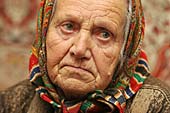
Hanna Antonivna Gonovalchiouk. Born in 1921. Interviewed in Berditchev, Zhitomir region on October 16, 2005. Direct witness. Witness 251.
© Guillaume Ribot
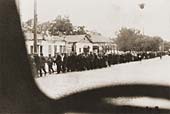
Columns of Jews led under the guard of German soldiers in the streets of Kamenetz-Podolsk, Ukraine, to an execution site located outside the city. August 27, 1941. Kamenetz-Podolsk, Ukraine.
© USHMM, courtesy of Ivan Sved
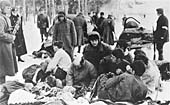
Jewish prisoners are forced to undress before their execution by Ukrainian auxiliaries. Photographer unknown. 1942. Chernigov, Ukraine.
© USHMM, courtesy of Magyar Nemzeti muzeum Torteneti Fenykeptar
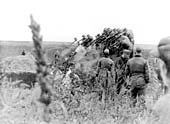
Members of a Einsatzkommando firing at Jews in a field in Dubossary, Moldova. 14 September 1941. Dubossary, Moldova, USSR. Unidentified photographer.
© USHMM, Impérial War Museum. Crown copyright. Rights reserved
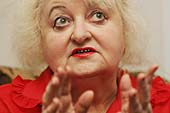
Nina Roufimovna Lisitsina. Born in 1939. Interviewed in Belogorsk in Crimea on December 24, 2004. Survivor. Witness 103.
© Guillaume Ribot